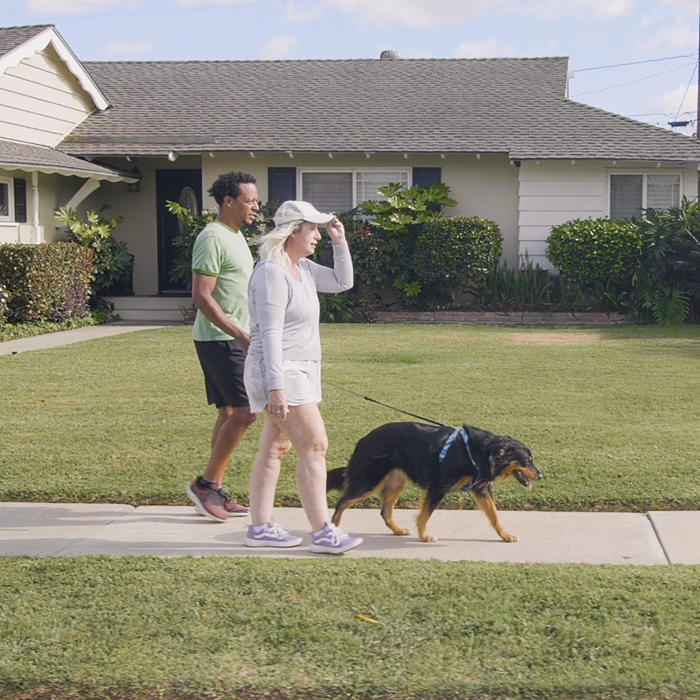How to Manage Chronic Swelling


Because conditions like lymphedema, lipedema, and certain venous diseases are chronic and progressive, daily management is important to keep your symptoms from getting worse and to improve your quality of life.
A comprehensive way to manage your symptoms
Clinical experts recommend a multi-pronged approach to managing chronic swelling. Working with your doctor and the rest of your care team, you can find the right combination of lifestyle changes, in-office treatments, and at-home therapies to help you take control of your condition.
Lifestyle changes
Sometimes simple lifestyle changes can make a significant difference in how you feel, including your swelling and related symptoms. Some examples include:
- Exercise: Daily exercise can help your lymphatic system work more effectively. Start slowly, and always check with your doctor first.
- Diet: While lymphedema, lipedema, and chronic venous disease are not caused by a poor diet, many people find that eating a healthy range of foods, limiting portion sizes, and avoiding processed foods helps them feel better.
- Clothing: Avoid tight or constricting garments, particularly around the swollen area. To prevent moisture from building up on the affected skin, make sure your clothes are breathable.
- Skin care: Keeping the skin around the affected area clean, dry, and moisturized can help prevent infections.
At-home therapies
Your care team may also prescribe or suggest therapies you can do at home to help manage your symptoms. These may include:
- Compression garments: One of the most important components to managing lymphedema is the use of compression garments including stockings, sleeves that can be worn throughout the day. This type of garment will help to reduce the rate at which the affected area will fill with fluid as you work, exercise or perform activities of daily living.
- Elevation: When you’re seated or lying down, try elevating the swollen area above the level of your heart to promote circulation and drainage of excess fluid.
- Self-massage: You may be instructed to perform a gentle skin stretch known as manual lymph drainage or MLD to your affected limb or area of swelling. Daily manual lymph drainage helps to direct and move excess fluid away from the affected swollen areas toward healthier regions of the body where it can be managed normally. This type of skin technique can reduce symptoms of tightness, pain and overall feeling of heaviness.
- Pneumatic compression devices (PCDs): These pumps use gentle mechanical pressure to simulate manual lymph drainage massage at home. Patients find PCDs easier to use regularly than relying on in-office therapies, with a higher degree of satisfaction and effectiveness.
- Multilayer bandaging: Another component recommended to help manage symptoms will include some type of multilayer bandaging system that can be applied during the day or at night to reduce swelling and improve the health of the skin. Bandage systems typically include various sizes of short stretch bandages and foam padding that are applied in layers onto the limb or affected area. An alternative to a short stretch bandage system is an inelastic Velcro strap binder which provides the same benefits, but for some, is easier to apply. Bandage systems are an effective tool to reduce the daily burden of excess fluid that accumulates throughout the day and can be applied and worn during the day or at night.
- Skin care: Skin care is another important component to maintaining a healthy microenvironment and reducing the risk of developing an infection called Cellulitis. It is important to keep your skin clean, dry, and moisturized with low ph lotions in the affected area.
- Medications: Doctors may prescribe anticoagulants for chronic venous disease, and your doctor may prescribe other medications to control your unique combination of symptoms. Note that diuretics are not an effective treatment for lymphedema or lipedema, and always be sure to consult your physician before taking any medications to treat your condition.
In-clinic treatments
Your doctor may refer you to a specialist for treatments to reduce your swelling and alleviate other symptoms. Examples of in-office treatments commonly prescribed for swelling include:
- Physical therapy: Supervised resistance training has been shown to improve symptoms associated with lymphedema and lipedema, such as pain and reduced range of motion.
- Occupational therapy: If your swelling has had a significant impact on your ability to carry out normal activities, your doctor may refer you to an occupational therapist, who can help you learn new or modified ways to improve your daily activities.
- Manual lymph drainage: Trained lymphedema therapists offer this specialized massage technique that helps your tissues to release excess fluid.
- Complete decongestive therapy: This treatment program combines several different methods including massage, custom compression, skin care, and exercises.
- Venous procedures: A variety of treatments using lasers, injections, and minor surgeries may be suggested for people with chronic venous disease leading to lymphedema.
- Speech therapy: For people with lymphedema of the head and neck, speech therapy can help restore the ability to swallow and communicate effectively.
You can take control of your condition
Chronic swelling can be managed effectively. Following your care plan and making time for therapies as prescribed puts you back in control of how you feel.